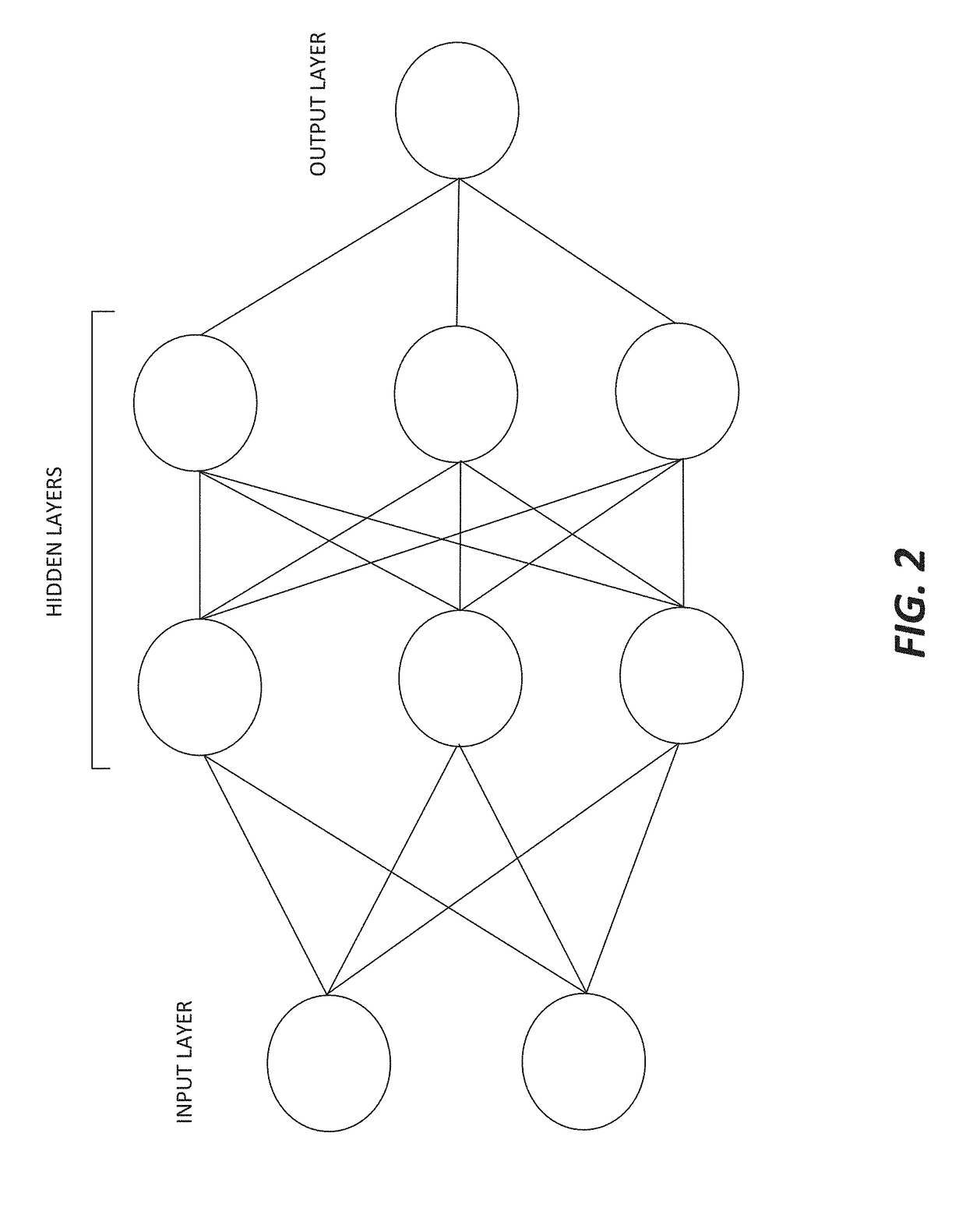De-noising images using machine learning
a machine learning and image technology, applied in image enhancement, image analysis, instruments, etc., can solve the problems of not being able to fix image artifacts, not being able to achieve standard image denoising, etc., to achieve efficient de-noise images
- Summary
- Abstract
- Description
- Claims
- Application Information
AI Technical Summary
Benefits of technology
Problems solved by technology
Method used
Image
Examples
Embodiment Construction
[0024]The present disclosure relates to using a neural network to efficiently de-noise images that were generated using a ray tracer. The neural network can be trained using noisy images (generated using few samples) and either corresponding de-noised images (generated by applying a denoiser (e.g., filter) to a noisy image) or high-sampled images (generated using many samples). An input feature to the neural network can be associated with color from pixels of an image. For example, the input feature can be the color from pixels of the image. For another example, the input feature can be a variance for samples for each pixel of the image. Other input features to the neural network, which would not be known in normal image processing, can include shading normal, depth, albedo, and other characteristics available from a computer-generated scene (e.g., an animated scene, three-dimensional scene, or an image that was generated by a computer from a scene description). After the neural net...
PUM
 Login to View More
Login to View More Abstract
Description
Claims
Application Information
 Login to View More
Login to View More - R&D
- Intellectual Property
- Life Sciences
- Materials
- Tech Scout
- Unparalleled Data Quality
- Higher Quality Content
- 60% Fewer Hallucinations
Browse by: Latest US Patents, China's latest patents, Technical Efficacy Thesaurus, Application Domain, Technology Topic, Popular Technical Reports.
© 2025 PatSnap. All rights reserved.Legal|Privacy policy|Modern Slavery Act Transparency Statement|Sitemap|About US| Contact US: help@patsnap.com



